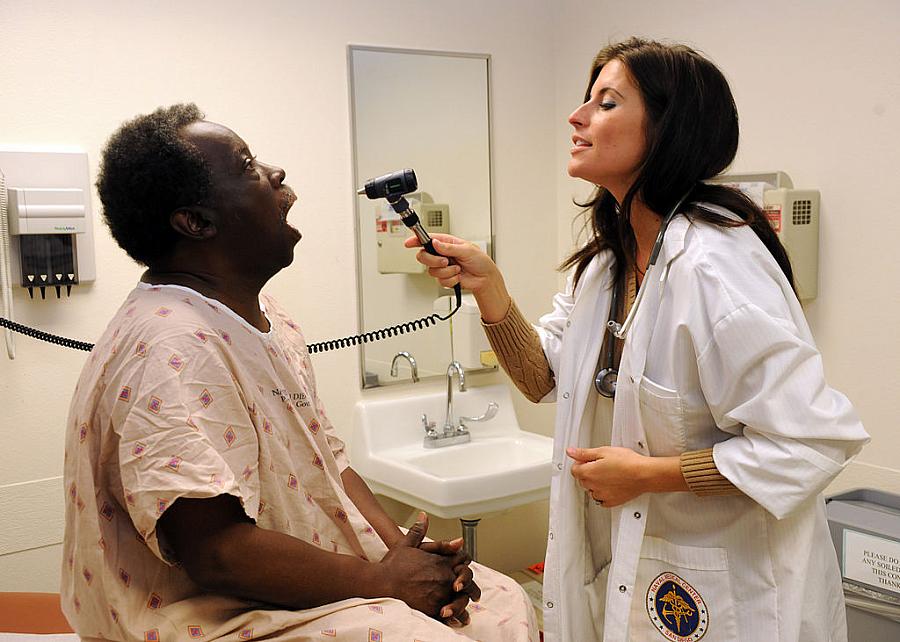Five key ways health reform is changing the delivery of health care

A nurse practitioner sees a patient.
The Affordable Care Act not only expanded health care access to millions of Americans, but it is also changing the way health systems deliver care. In the post-reform climate, health systems and physician groups are increasingly experimenting with ways to improve access while taking advantage of new payment models.
“I’ve seen a much more heightened focus on access since health reform started coming down the pike,” said Jennifer Gingrass, a principal with ECG Management Consultants, who works with large health systems and physician groups throughout the country.
I caught up with Gingrass to hear more about some of the specific steps providing are taking to improve patients’ ability to access health care. Below are the five key areas where Gingrass says significant strides are being made.
Open schedules
For decades, primary care physicians considered a backlog of patients seeking appointments part of a successful practice.
“Having a long wait list was a badge of honor, assuring you’d have demand in the future,” Gingrass said. “Now, taking care of patients up front is much more the focus.”
To help with that, health systems and physicians’ offices are increasingly adopting a form of scheduling called “Open Access,” which encourages same- or next-day appointments.
Instead of coming into the office with their days completely scheduled, providers have many more openings, which can be filled as patients request to be seen. Future appointments typically are booked no longer than two to three weeks in advance, which leads to fewer cancellations and no-shows. People who need to be seen immediately can fit into any available slot.
When patients are seen more quickly, they’re less likely to seek care elsewhere, such as expensive emergency rooms. “If you don’t provide same- or next-day service, people are going to go elsewhere,” Gingrass said.
Patient navigators
This term has been used frequently since the passage of the Affordable Care Act, as so-called navigators have helped sign people up for health insurance. Navigators are also being used to guide people through the often-complex process of getting appropriate care.
Gingrass uses the example of a patient diagnosed with cancer, who could use help coordinating several specialists and multiple medications. Under the traditional fee-for-service approach, there wasn’t a financial incentive to employ these helpers. But with the adoption of models such as patient-centered medical homes, where the individual’s total care is managed by a team of providers, it makes financial and medical sense for providers and navigators to better coordinate a patient’s care.
Telehealth
Telehealth, where providers see patients remotely, often through video conferencing software, isn’t a new concept. But, like many of these adaptations, health reform is accelerating its implementation, Gingrass said.
Telemedicine can be used for patients who might otherwise be unable to see a provider for time or geographic reasons, or for those whose condition doesn’t require a face-to-face appointment. Along with increasing availability, it can also reduce costs, providers say.
There are some hurdles, though. Medicare still does not pay for telehealth care unless the originating site is in a rural Health Professional Shortage area or outside a Metropolitan Statistical Area (MSA). In some states, Medicaid is offering coverage for telemedicine, she said. (Here’s a list of state-by-state laws, regulations and Medicaid programs for telehealth). Coverage through private insurance varies, though history has shown that private insurers typically follow state and federal coverage programs, which are increasingly considering the option.
In 2015, for example, Medicare allowed the billing of a code for non face-to-face care management and coordination of patients with two or more chronic diseases – a step that opened the door for more telemedicine.
“In essence, Medicare is moving in this direction, although a little indirectly,” Gingrass said.
Contact centers
A basic step providers can take to help with patient access is simply to answer their phone calls. But that can be tough for small physician practices that may have limited front-office staff. A growing trend is to build a contact center for multiple offices that fields calls, takes messages, issue reminders and schedules appointments.
“By consolidating in the contact center, you can create some economies of scale,” Gingrass said. “You take a bunch of practices, and free them up to do what they need to at the practice site.”
There are cost savings, too, as working together requires fewer overall full-time employees.
Using all providers, not just doctors
As more and more newly-insured patients seek primary care, one way to deal with the shortage of primary care doctors is to use more “advanced practice clinicians,” such as nurse practitioners and physician assistants. This is not only less expensive, but allows everyone to work to the highest level of their license, she said. More and more health systems and physician offices adopting this approach, according to Gingrass. The California legislature is currently considering a bill that would let nurse practitioners see patients without a supervising physician in certain settings.
In primary care, these providers can see the more routine coughs and colds, freeing up physicians to see more serious cases. And, it often shortens wait times for everyone.
Photo by US Navy via Wikimedia Commons.

